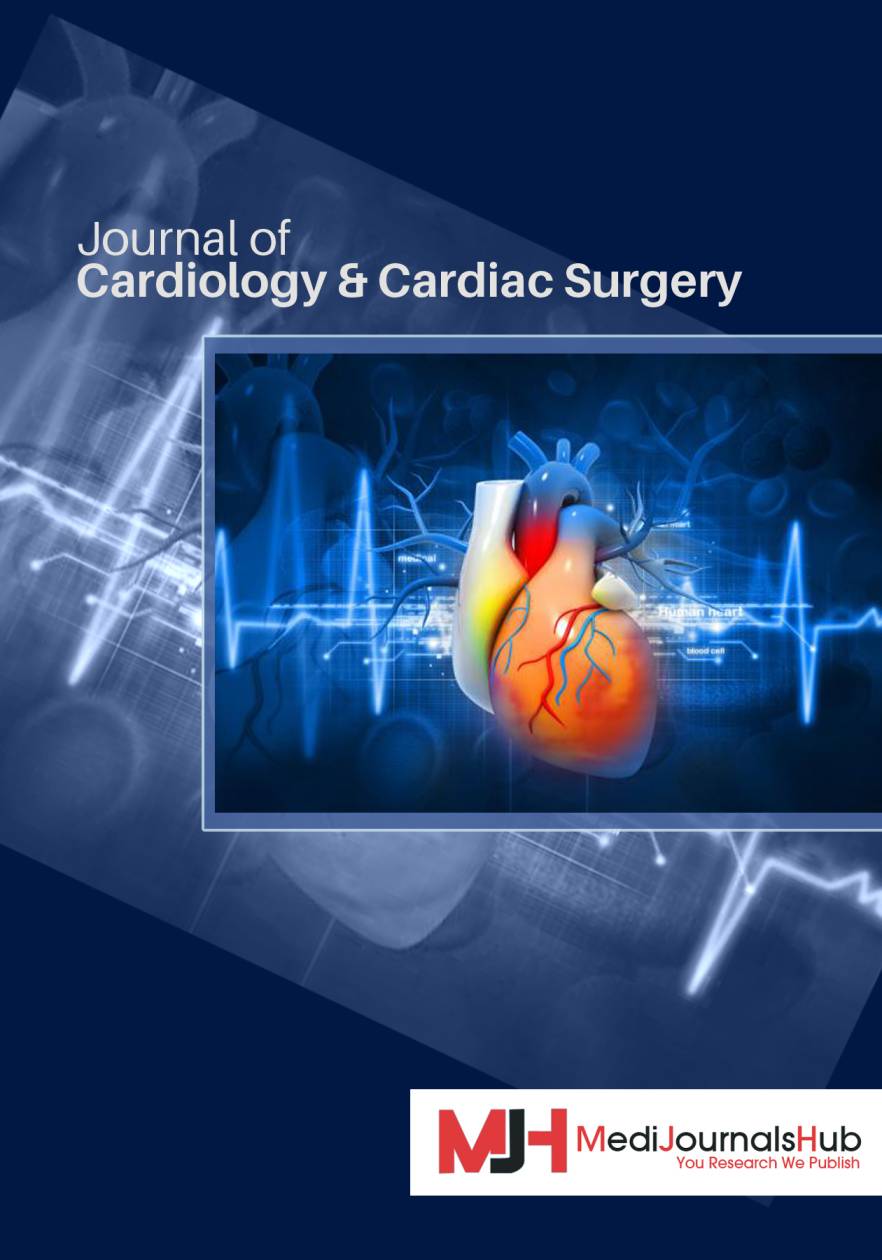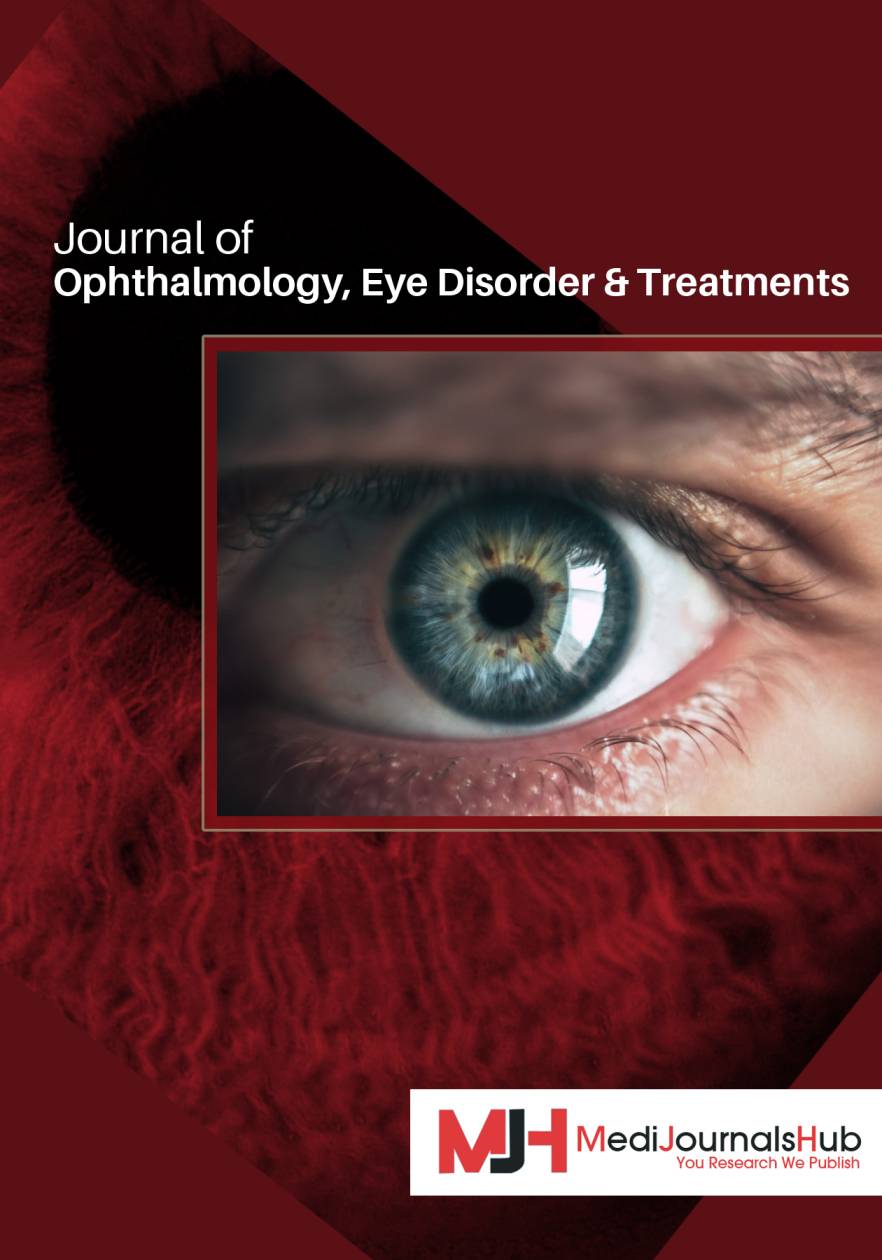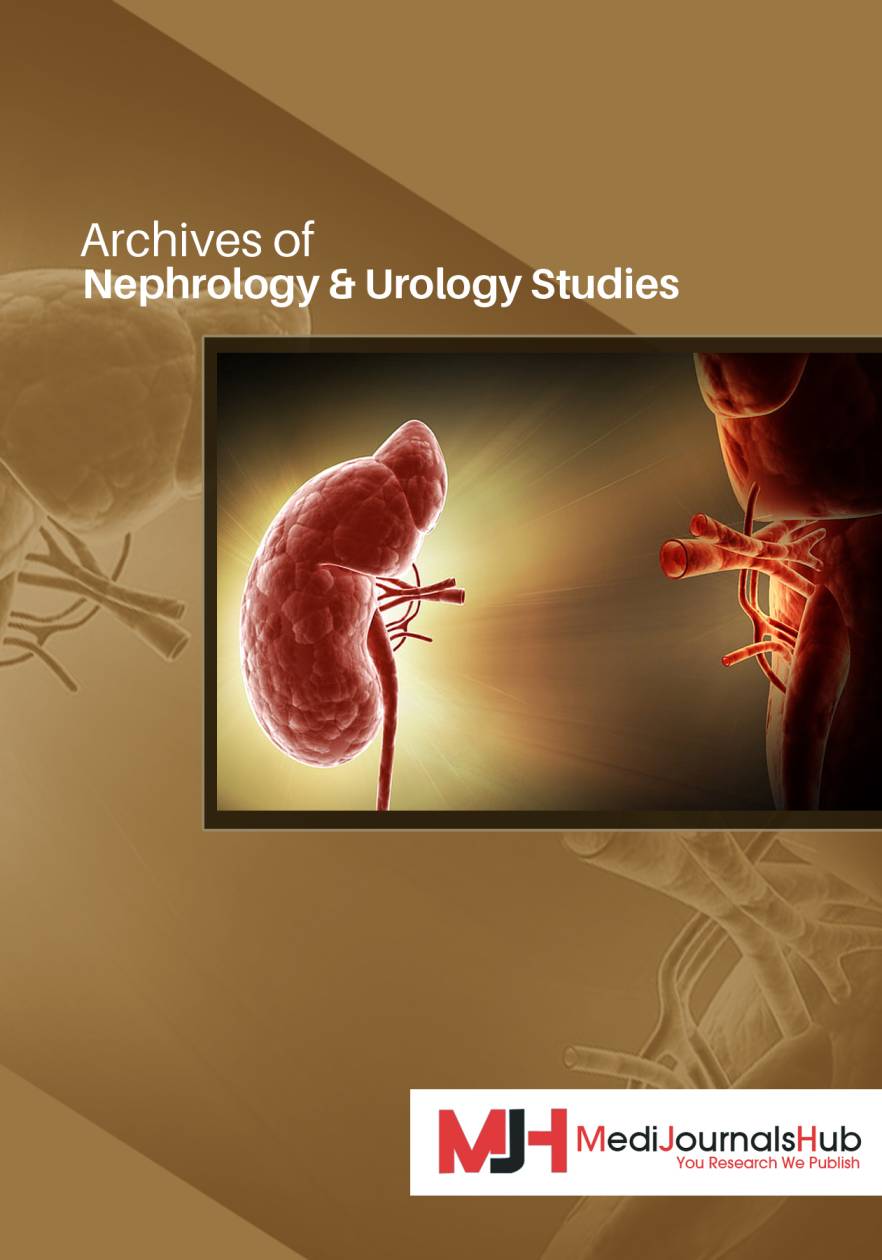- Open-Access Publishing
- Quality and Potential Expertise
- Flexible Online Submission
- Affordable Publication Charges
- Expertise Editorial Board Members
- 3 Week Fast-track Peer Review
- Global Visibility of Published Articles
Use of CHA2DS2-VASc Score In Patients Without Atrial Fibrillation: Review Of Literature
Hassan Tahir1*, Usman Sarwar2, Ali Hussain3, Muhammad Umer Awan4, Sajjad Ahmad5, Muhammad Shabbir Ijaz6, James Livesay1, Raj Baljepally1
1Department of Cardiology, Heart Lung Vascular Institute, University of Tennessee Medical Center, Knoxville, TN, USA
2Department of Cardiology, University of South Alabama, Mobile, AL, USA
3Department of Cardiology, Sentara Albemarle Medical Center, Elizabeth City, NC, USA
4Department of Cardiology, Iowa Methodist medical center, Des Moines, IA, USA
5Department of Cardiology, Mosaic life care, saint Joseph, MO, USA
6Department of Cardiology, ARCOM/Poplar Bluff Regional Medical Center, Poplar Bluff, MO, USA
*Corresponding Author: Hassan Tahir, Department of Cardiology, Heart Lung Vascular Institute, University of Tennessee Medical Center, Knoxville, TN, USA, E-mail: doctorhassantahir@gmail.com
Received date: July 05, 2021; Accepted date: July 27, 2021; Published date: August 03, 2021
Citation:Tahir H, Sarwar U, Hussain A, Awan MU, Ahmad S, et al. (2021) Use of CHA2DS2-VASc Score in Patients without Atrial Fibrillation: Review of Literature. J Card Cardi Sur. 1:05.
Copyright: © 2021 Tahir H. This is an open-access article distributed under the terms of the Creative Commons Attribution License, which permits unrestricted use, distribution, and reproduction in any medium, provided the original author and source are credited.
Keywords
CHA2DS2-VASc score; Atrial fibrillation; Coronary artery disease
Abstract
CHA2DS2-VASc score is used to predict risk of embolic stroke in patients with atrial fibrillation. Various studies have shown that CHA2DS2-VASc score can be used in atrial fibrillation free patients to predict various outcomes. Role of CHA2DS2-VASc score has been described to predict outcomes in chronic heart failure with reduced ejection fraction, myocardial infarction, post transcatheter aortic valve implantation, post atrial flutter ablation, and Takotsubo cardiomyopathy. Similarly, CHA2DS2-VASc score has been used to predict severity of coronary artery disease, no reflow phenomenon post stenting, contrast induced nephropathy and transradial approach failure.
CHA2DS2-VASc score is a simple easy to use tool which can be used in assessing and risk stratifying various cardiovascular and cerebral vascular conditions in the absence of atrial fibrillation.
Introduction
European Society of Cardiology (ESC) and American Society of Cardiology (ASC) guidelines recommend using CHA2DS2-VASc score in the management of atrial fibrillation to decide which individuals can benefit from oral anticoagulation for stroke prevention [1,2]. Interestingly, many elements of CHA2DS2-VASc score are important risk factors for various other cardiovascular conditions besides atrial fibrillation; therefore, many studies have been done to assess the effectiveness of CHA2DS2-VASc score in non-atrial fibrillation patients. Due to emerging and increasing use of CHA2DS2-VASc score in patients without atrial fibrillation, there is a need for review of literature including studies evaluating the role of CHA2DS2-VASc score in non-atrial fibrillation patients. Our review article provides a comprehensive summary of previous research on this important topic.
Discussion
Table 1 describes the review of studies evaluating the use of CHA2DS2-VASc score in non-atrial fibrillation patients.
| Study | No. of Patients | Indication for use of CHA2DS2-VASc score |
| Ntaios et al. [3] | 1,756 | Predict long-term stroke outcomes in non-AF patients |
| Koene et al. [4] | 10,671 | Predict long-term stroke outcomes in non-AF patients |
| Mitchell et al. [5] | 20,970 | Predict long-term stroke outcomes in non-AF patients |
| Parsons et al. [6] | 1,606 | Predict thromboembolic events and overall mortality in patients without atrial fibrillation who have implantable devices. |
| Peguero et al. [7] | 3,492 | Predict postoperative strokes independent of the presence of AF |
| Temizer et al. [8] | 106 | Risk stratification and mortality prediction in patients with reduced LVEF |
| Li et al. [9] | 29,452 | Predict 1-year MACCE in patients with AMI |
| Bozbay et al. [10] | 647 | Predict in-hospital and long-term adverse clinical outcomes in STEMI |
| Peng [11] | 3,745 | Predict MACE in the ACS patients without AF who underwent PCI |
| Kundi et al. [12] | 4,373 | Predict long-term prognosis in patients with AMI |
| Lee et al. [13] | 431 | Risk stratification of hospital admissions among patients with cardiovascular diseases receiving a fourth-generation synchronous telehealth program |
| Andrianto et al. [14] | 210 | Predict the risk of severe CAD |
| Modi et al. [15] | 2,976 | Predict the risk of severe CAD |
| Cetin et al [16] | 407 | Predict the risk of severe CAD |
| Ciftci et al. [17] | 72 | Predict the risk of severe CAD |
| Mirbolouk et al. [18] | 396 | Predict no-reflow before primary PCI in STEMI patients |
| Ipek et al. [19] | 2,375 | Predict risk of no-reflow and in-hospital mortality rates post primary PCI |
| Chaudhary et al. [20] | 300 | Predict Contrast Induced Nephropathy (CIN) in patients with ACS undergoing PCI |
| Liu et al. [21] | 103 | Predict new-onset AF after ablation of typical atrial flutter |
| Tahir et al. [22] | 1,775 | Predict failure of radial access for cardiac catheterization |
| Orvin et al. [23] | 633 | Predict 1-year clinical outcomes including death and stroke in patients who underwent TAVI. |
| Parodi et al. [24] | 371 | Predict cardiovascular events and mortality at long-term follow-up in Takotsubo syndrome |
| Ünal et al [25] | 1371 | Predict acute stent thrombosis before PCI |
Table 1: Studies evaluating role of CHA2DS2-VASc score in non-atrial fibrillation patients.
CHA2DS2-VASc score as a predictor of stroke risk in non-atrial fibrillation individuals
Various factors in CHA2DS2-VASc score can predict the risk of future ischemic strokes even in the absence of atrial fibrillation. In addition to predicting stroke, CHA2DS2-VASc score also has a prognosis value. It can predict further neurology deterioration, clinical outcome after tissue Plasminogen Activator (tPA), and stroke-related mortality [3]. There are several studies done in this regard. One study performed by Koene et al. analyzed the Atherosclerosis Risk In Communities (ARIC) study data [4]. Participants with the history of atrial fibrillation, anticoagulation, and history of stroke were excluded. Amongst 10,671 participants who did not have atrial fibrillation but did have cardiac risk factors, 280 patients were found to have an ischemic stroke. Most of these strokes (146) were thrombotic, 57 were embolic, and 77 were unclassified. The study results also revealed a direct relationship between increased CHA2DS2-VASc score and incidence of stroke. A high CHA2DS2-VASc score (>5) was associated with increased risk of stroke to 8.9 per 1000 person-years as compared to 1.3 per 1000 person-years in individuals who had a lower CHA2DS2-VASc score (0-1). Mitchell, along with his colleagues, concluded that CHA2DS2-VASc score can be useful in predicting the incidence of stroke in patients who were discharged after getting treated for the acute coronary syndrome (ACS) [5]. Higher CHA2DS2-VASc score (>4) was associated with a higher occurrence of ischemic stroke in individuals with ACS in the absence of atrial fibrillation [5].
In the comprehensive study done in Mayo Clinic, individuals with no atrial fibrillation on implantable cardiac monitoring devices, CHA2DS2-VASc score still predicted mortality and thromboembolic events [6]. The total number of thromboembolic events, along with mortality, increased with increments of CHA2DS2-VASc score. Incidence of thromboembolism was calculated first at 6-month, and later at 5 years. The cumulative incidence for CHA2DS2-VASc score 0 to 2, 3 to 5, and 6 to 9 at 6 months was 0.5%, 3.9% and 8.2% respectively. At 5 years, the cumulative incidence was 1.9%, 14.1%, and 29.4% respectively. The study also showed that an elevated CHA2DS2-VASc score was associated with an increased risk of new-onset of atrial fibrillation. The CHA2DS2-VASc score with a range of 6-9 showed 31.7% risk of new atrial fibrillation compared to 6.9% in individuals with a score between 0-2 [6]. Peguero et al. studied the usefulness of the CHA2DS2-VASc score to predict postoperative stroke in patients having cardiac surgery independent of atrial fibrillation [7]. The CHA2DS2-VASc score turned out to be an independent predictor of postoperative stroke in the absence of atrial fibrillation (OR of 1.25; p=0.014).
CHA2DS2-VASc score use as a prognostic tool in patients with heart failure with reduced ejection fraction
The CHA2DS2-VASc score is useful in assessing mortality in individuals with heart failure with reduced ejection fraction, irrespective of presence or absence of atrial fibrillation. Orkun and colleagues, in their study, analyzed the data of a total of 106 patients with reduced ejection fraction [8]. Multi-regression analysis showed higher CHA2DS2-VASc score was associated with higher mortality [HR 2.15, (CI) 95% 1.48-3.15, p<0.001]. CHA2DS2-VASc score >3 showed increased mortality with 60% sensitivity and specificity of 77%. The study also showed that with a one-point increase in CHA2DS2-VASc, there was a two-fold increase in mortality.
CHA2DS2-VASc score role in predicting cardiovascular and cerebrovascular outcomes after Acute Myocardial Infarction (AMI)
A retrospective study done by Li et al. found that CHA2DS2-VASc score >4 was an independent predictor of major adverse cardiovascular and cerebrovascular event in acute Myocardial Infarction (MI) patients [9]. Data of 29,000 patients with non-fatal MI were analyzed. Study showed CHA2DS2-VASc score variables had a directly proportional association with an increase in the incidence of an adverse cardiac events. Patients with a CHA2DS2-VASc score >4 were found to have an increased incidence of recurrent Myocardial Infarction (MI). This study also demonstrated CHA2DS2-VASc score >7 was associated with 100% mortality within 1 year after Myocardial Infarction (MI). In addition to long-term outcomes, the CHA2DS2-VASc score can be used to identify elevated risk individuals regarding in-hospital mortality after acute coronary syndrome. A study done by Bozbay et al. showed that a higher score (>2) had increased mortality (8.7% vs. 1.9%: P<0.001) [10]. Higher CHA2DS2-VASc score has been reported in various studies to be associated with low Ejection Fraction (EF) and higher Killip class in patients with acute Myocardial Infarction (MI) [11,12].
Use of CHA2DS2-VASc score to prevent hospital readmission
CHA2DS2-VASc is also beneficial in identifying patients who have a higher risk of admission to the hospital. In the study done by Lee et al., patients were risk-stratified according to their CHA2DS2-VASc score. Individuals with a score greater than 4 received a telehealth program that was beneficial in decreasing admission to the hospital (46.5% vs. 54.8%, P=0.003) [13].
CHA2DS2-VASc score utility in predicting severity of coronary artery disease
CHA2DS2-VASc score is also valuable for predicting the severity of coronary artery disease irrespective of atrial fibrillation status [14-17]. Various studies have shown that the patients with elevated CHA2DS2-VASc score are associated with more severe coronary artery disease than patients who have lower score. In one study, a CHA2DS2-VASc score of greater than 3 was able to diagnose severe coronary artery disease with a good (77%) sensitivity and reasonable specificity (56%) [17].
CHA2DS2-VASc role in predicting no-reflow phenomenon post percutaneous intervention (PCI)
CHA2DS2-VASc score also can predict risk of having significant complications of PCI. A study done by Mirbolouk and colleagues showed that higher CHA2DS2-VASc score could anticipate possibilities of no-reflow phenomena [18]. Another study also showed similar findings that in patients with no-reflow phenomena, CHA2DS2-VASc score was substantially increased (OR: 1.58, 9 1.33-1,88, P<0.001) [19].
CHA2DS2-VASc role in predicting contrast-induced nephropathy post percutaneous intervention (PCI)
CHA2DS2-VASc score is also valuable for predicting contrast-induced nephropathy in patients undergoing PCI. A study done by Chaudhary included 300 patients who had PCI. The CHA2DS2-VASc score of 3 was used as a cutoff to divide subjects into two groups [20]. The group with elevated CHA2DS2-VASc score appeared to have more contrast-induced nephropathy (56.8% vs. 4.8%; p=0.0001). The author concluded that CHA2DS2-VASc score is a simple and quick method for predicting Contrast-Induced Nephropathy (CIN) in patients with ACS undergoing PCI [20].
CHA2DS2-VASc score use to assess outcomes of an atrial flutter ablation procedure
Following atrial flutter ablation, CHA2DS2-VASc score can be helpful to predict incidence of new-onset atrial fibrillation. According to the study done by Liu et al., individuals with CHA2DS2-VASc score >3 carried a significant increased risk of new-onset atrial fibrillation after ablation of atrial flutter as compared to the individuals with low CHA2DS2-VASc score of <3 (67 % vs. 18.7%, P <0.001) [21].
CHA2DS2-VASc score use in predicting transradial approach failure
CHA2DS2-VASc score was used in one study to predict failure of successful coronary angiogram or PCI via right radial access [22]. Radial access failure and crossover to femoral access was highest (19.2%) in the high CHA2DS2-VASc score (>5) score group (P<0.0001). The crossover rate reached almost 42.9% in patients with CHA2DS2-VASc score of 8. High CHA2DS2-VASc score was also associated with more contrast volume, radiation exposure and fluoroscopy time [22]. In addition, vascular complications were also noted to be higher in patients who underwent crossover to femoral access.
CHA2DS2-VASc score use in predicting clinical outcomes after Transcatheter Aortic Valve Implantation (TAVI)
CHA2DS2-VASc score has been studied to predict clinical outcomes in patients after Transcatheter Aortic Valve Implantation (TAVI) [23]. A study performed by Orvin et al. showed that high CHA2DS2-VASc score was associated with increased mortality and stroke 1 year after TAVI (p=0.012 and p=0.025, respectively). A 38% increase in the 1-year combined outcome of mortality or stroke (p=0.022) was noted with each point increase in CHA2DS2-VASc Score.
CHA2DS2-VASc score use in predicting outcomes in Takotsubo patients
Use of CHA2DS2-VASc score to predict adverse events in Takotsubo patients was studied by Parodi et al. [24]. The authors concluded that CHA2DS2-VASc score can be used to predict cardiovascular events and mortality in patients with Takotsubo syndrome.
CHA2DS2-VASc score use in predicting acute stent thrombosis
One study evaluated the use of the CHA2DS2-VASc score in predicting acute stent thrombosis before PCI in atrial fibrillation free patients [25]. The study concluded that a CHA2DS2-VASc score of greater than 2 was an independent predictor of acute stent thrombosis.
Conclusion
Although CHA2DS2-VASc score is widely used in atrial fibrillation patients to predict embolic stroke, several studies have demonstrated that its scope extend beyond atrial fibrillation. CHA2DS2-VASc score is a simple easy to use tool which can be used in assessing and risk stratifying various cardiovascular and cerebral vascular conditions in the absence of atrial fibrillation.
Ethical Statement
The study was conducted in accordance with Helsinki Declaration as revised in 2013.
Conflicts of Interest
None.
Funding
None.
Acknowledgment
None.
References
01. Hindricks G, Potpara T, Dagres N, Arbelo E, Bax JJ, et al. 2020 ESC Guidelines for the diagnosis and management of atrial fibrillation developed in collaboration with the European Association for Cardio-Thoracic Surgery (EACTS). Eur Heart J. 42(5): 373-498 (2021).
02. Rajagopalan B, Curtis AB. Management of atrial fibrillation: What is new in the 2014 ACC/AHA/HRS guideline? Postgrad Med. 127(4): 396-404 (2015).
03. Ntaios G, Lip GYH, Makaritsis K, Papavasileiou V, Vemmou A, et al. CHADS₂, CHA₂S₂DS₂-VASc, and long-term stroke outcome in patients without atrial fibrillation. Neurology. 80(11): 1009-17 (2013).
04. Koene RJ, Alraies MC, Norby FL, Soliman EZ, Maheshwari A, et al. Relation of the CHA2DS2-VASc score to risk of thrombotic and embolic stroke in community-dwelling individuals without atrial fibrillation (from the Atherosclerosis Risk in Communities [ARIC] study). Am J Cardiol. 123(3): 402-8 (2019).
05. Mitchell LB, Southern DA, Galbraith D, Ghali WA, Knudtson M, et al. Prediction of stroke or TIA in patients without atrial fibrillation using CHADS₂ and CHA2DS2-VASc scores. Heart. 100(19): 1524-30 (2014).
06. Parsons C, Patel SI, Cha S, Shen W-K, Desai S, et al. CHA2DS2-VASc score: A predictor of thromboembolic events and mortality in patients with an implantable monitoring device without atrial fibrillation. Mayo Clin Proc. 92(3): 360-9 (2017).
07. Peguero JG, Issa O, Podesta C, Elmahdy HM, Santana O, et al. Usefulness of the CHA2DS2-VASc score to predict postoperative stroke in patients having cardiac surgery independent of atrial fibrillation. Am J Cardiol. 115(6): 758-62 (2015).
08. Temizer O, Açar B, Yayla Ç, Ünal S, Ertem AG, et al. The Association between CHA2DS2-VASc Score and mortality in patients with heart failure with reduced ejection fraction. Acta Cardiol Sin. 33(4): 429-435 (2017).
09. Li CY, Chang CJ, Chung WJ, Lin CJ, Hsueh SK, et al. Assessment of CHA2DS2-VASc score for predicting cardiovascular and cerebrovascular outcomes in acute myocardial infarction patients. Medicine (Baltimore). 97(28): e11230 (2018).
10. Bozbay M, Uyarel H, Cicek G, Oz A, Keskin M, et al. CHA2DS2-VASc score predicts in-hospital and long-term clinical outcomes in patients with ST-segment elevation myocardial infarction who were undergoing primary percutaneous coronary intervention. Clin Appl Thromb Hemost. 23(2): 132-8 (2017).
11. Peng H, Sun Z, Chen H, Zhang Y, Ding X, et al. Usefulness of the CHA2DS2-VASc score to predict adverse outcomes in acute coronary syndrome patients without atrial fibrillation undergoing percutaneous coronary intervention. Am J Cardiol. 124(4): 476-84 (2019).
12. Kundi H, Kiziltunc E, Korkmaz A, Cicek G, Ornek E, et al. A novel risk scoring system to predict cardiovascular death in patients with acute myocardial infarction: CHA2DS2-VASc-CF score. Clin Appl Thromb Hemost. 24(2): 273-8 (2018).
13. Lee JK, Hung CS, Huang CC. Use of the CHA2DS2-VASc Score for risk stratification of hospital admissions among patients with cardiovascular diseases receiving a fourth-generation synchronous telehealth program: Retrospective cohort study. J Med Internet Res. 21(1): e12790 (2019).
14. Andrianto A, Jovie B, Al Farabi MJ, Gandi P, Shonafi KA, et al. Novel CHA2DS2-VASc-HSF is superior to CHA2DS2 and CHA2DS2-VASc score to predict the risk of severe coronary artery disease. Open Access Maced J Med Sci. 8(B): 451-6 (2020).
15. Modi R, Patted SV, Halkati PC, Porwal S, Ambar S, et al. CHA2DS2-VASc-HSF score-new predictor of severity of coronary artery disease in 2976 patients. Int J Cardiol. 228: 1002-6 (2017).
16. Cetin M, Cakici M, Zencir C, Tasolar H, Baysal E, et al. Prediction of coronary artery disease severity using CHA2DS2 and CHA2DS2-VASc scores and a newly defined CHA2DS2-VASc-HS score. Am J Cardiol. 113(6): 950-6 (2014).
17. Ciftci O, Yilmaz KC, Karacaglar E, Yilmaz M, Ozin B, et al. The Novel CHA2DS2-VASc-FSH Score is predictive of severe coronary artery disease on coronary angiography in patients with atrial fibrillation and unstable symptoms. Eurasian J Med. 51(2): 165-171 (2019).
18. Mirbolouk F, Gholipour M, Salari A, Shakiba M, Kheyrkhah J, et al. CHA2DS2-VASc score predict no-reflow phenomenon in primary percutaneous coronary intervention. J Cardiovasc Thorac Res. 10(1): 46-52 (2018).
19. Ipek G, Onuk T, Karatas MB, Gungor B, Osken A, et al. CHA2DS2-VASc score is a predictor of no-reflow in patients with ST-segment elevation myocardial infarction who underwent primary percutaneous intervention. Angiology. 67(9): 840-5 (2016).
20. Chaudhary AK, Pathak V, Kunal S, Shukla S, Pathak P. CHA2DS2-VASc score as a novel predictor for contrast-induced nephropathy after percutaneous coronary intervention in acute coronary syndrome. Indian Heart J. 71(4): 303-8 (2019).
21. Liu F, Xin Z, Bin Waleed K, Lin Y, Tse G, et al. CHA2DS2-VASc score as a predictor of new-onset atrial fibrillation after catheter ablation of typical atrial flutter. Front Physiol. 11: 558 (2020).
22. Tahir H, Livesay J, Fogelson B, Coombes T, Patel C, et al. Use of the CHA2DS2-VASc score in assessing transradial approach failure. Cardiovasc Revasc Med. (2021).
23. Orvin K, Levi A, Landes U, Bental T, Sagie A, et al. Usefulness of the CHA2DS2-VASc score to predict outcome in patients who underwent transcatheter aortic valve implantation. Am J Cardiol. 121(2): 241-8 (2018).
24. Parodi G, Scudiero F, Citro R, Silverio A, Bellandi B, et al. Risk stratification using the CHA2DS2-VASc score in Takotsubo syndrome: Data from the Takotsubo Italian network. J Am Heart Assoc. 14(9): e006065 (2017).
25. Ünal S, Açar B, Yayla Ç, Balci MM, Ertem A, et al. Importance and usage of the CHA2DS2-VASc score in predicting acute stent thrombosis. Coron Artery Dis. 27(6): 478-82 (2016).





